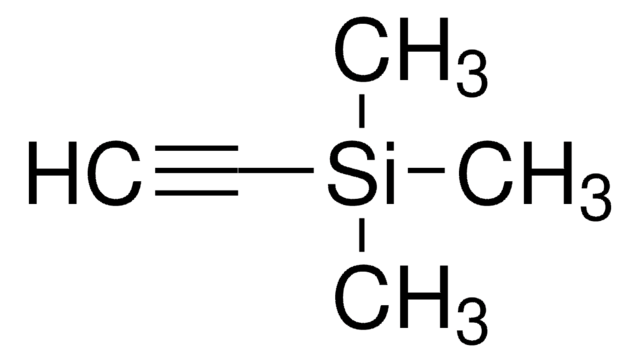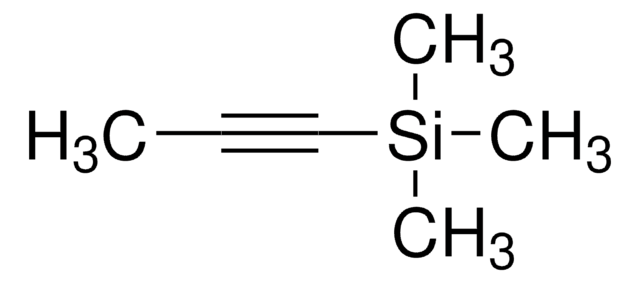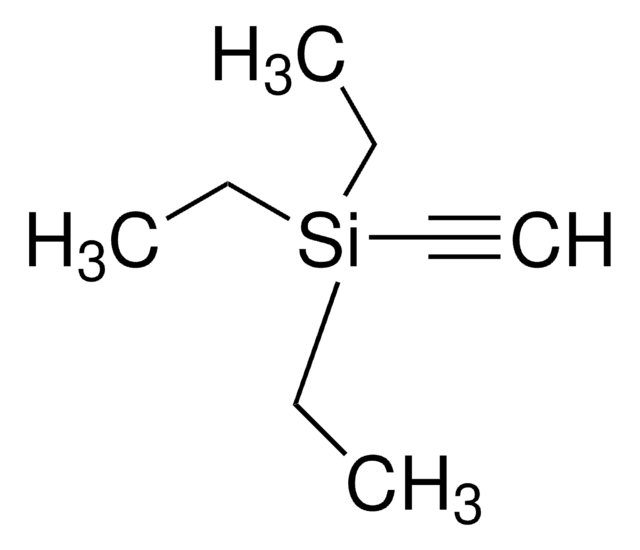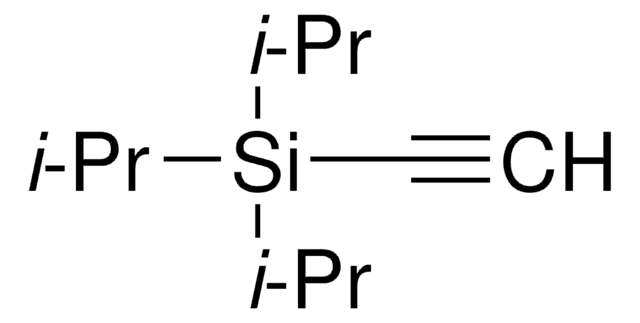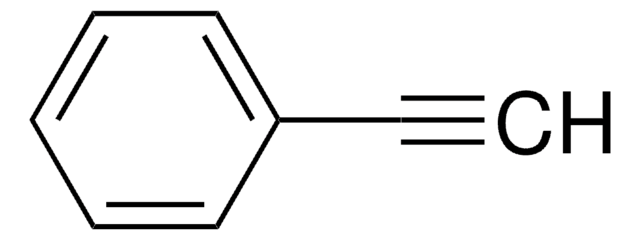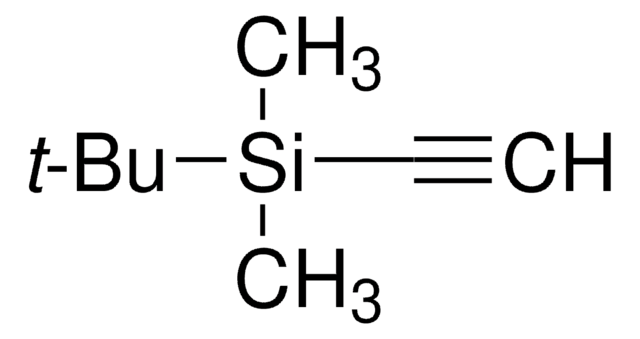187437
Bis(trimethylsilyl)acetylene
99%
Sinonimo/i:
BTMSA
About This Item
Prodotti consigliati
Livello qualitativo
Saggio
99%
Indice di rifrazione
n20/D 1.427 (lit.)
P. ebollizione
136-137 °C (lit.)
Punto di fusione
21-24 °C (lit.)
Densità
0.752 g/mL at 25 °C (lit.)
Temperatura di conservazione
2-8°C
Stringa SMILE
C[Si](C)(C)C#C[Si](C)(C)C
InChI
1S/C8H18Si2/c1-9(2,3)7-8-10(4,5)6/h1-6H3
ZDWYFWIBTZJGOR-UHFFFAOYSA-N
Cerchi prodotti simili? Visita Guida al confronto tra prodotti
Categorie correlate
Descrizione generale
Applicazioni
Avvertenze
Danger
Indicazioni di pericolo
Consigli di prudenza
Classi di pericolo
Eye Irrit. 2 - Flam. Liq. 2 - Skin Irrit. 2 - STOT SE 3
Organi bersaglio
Respiratory system
Codice della classe di stoccaggio
3 - Flammable liquids
Classe di pericolosità dell'acqua (WGK)
WGK 3
Punto d’infiammabilità (°F)
35.6 °F - closed cup
Punto d’infiammabilità (°C)
2 °C - closed cup
Dispositivi di protezione individuale
Eyeshields, Faceshields, Gloves, type ABEK (EN14387) respirator filter
Scegli una delle versioni più recenti:
Possiedi già questo prodotto?
I documenti relativi ai prodotti acquistati recentemente sono disponibili nell’Archivio dei documenti.
I clienti hanno visto anche
Articoli
The Diels–Alder reaction is the reaction between a conjugated diene and an alkene (dienophile) to form unsaturated six-membered rings. Since the reaction involves the formation of a cyclic product via a cyclic transition state, it is also referred to as a "cycloaddition".
We carry a large variety of electrophiles and nucleophiles that are widely used in C–C bond-forming reactions. This group of products contains many organometallic reagents as well as commonly-used alkylating and acylating reagents.
Il team dei nostri ricercatori vanta grande esperienza in tutte le aree della ricerca quali Life Science, scienza dei materiali, sintesi chimica, cromatografia, discipline analitiche, ecc..
Contatta l'Assistenza Tecnica.